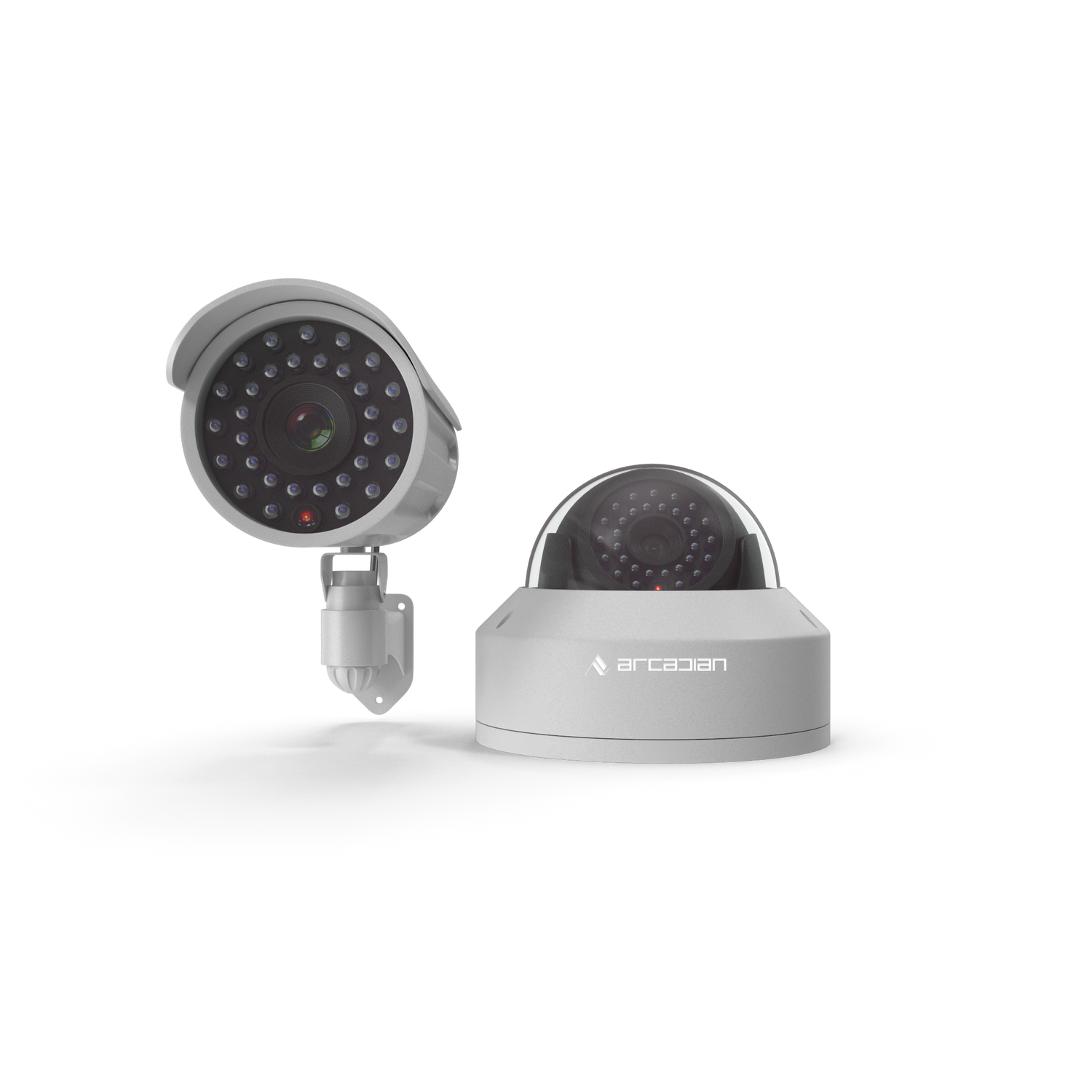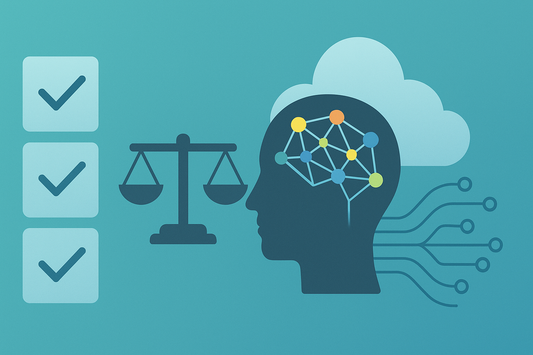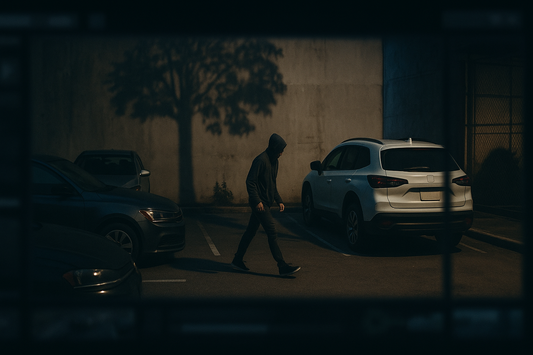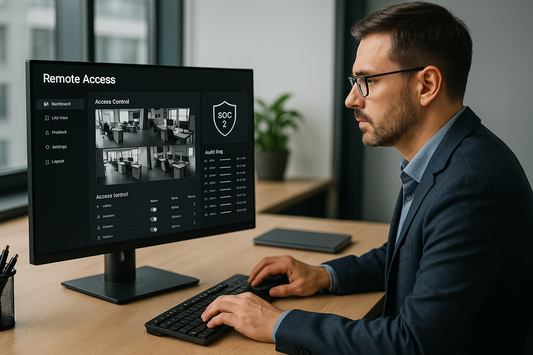The Ultimate Guide to Loss Prevention Terminologies, Techniques, and Challenges (2025 Edition)
Retail shrinkage soared past $112 billion in 2023 (NRF), threatening the survival of major retailers. From shoplifting and sweethearting to organized retail crime (ORC), the world of loss prevention (LP) is packed with jargon, strategies, and challenges. This comprehensive guide explains the key terminologies, modern techniques, and challenges facing LP teams — and how ArcadianAI’s AI-driven platform helps fight back.
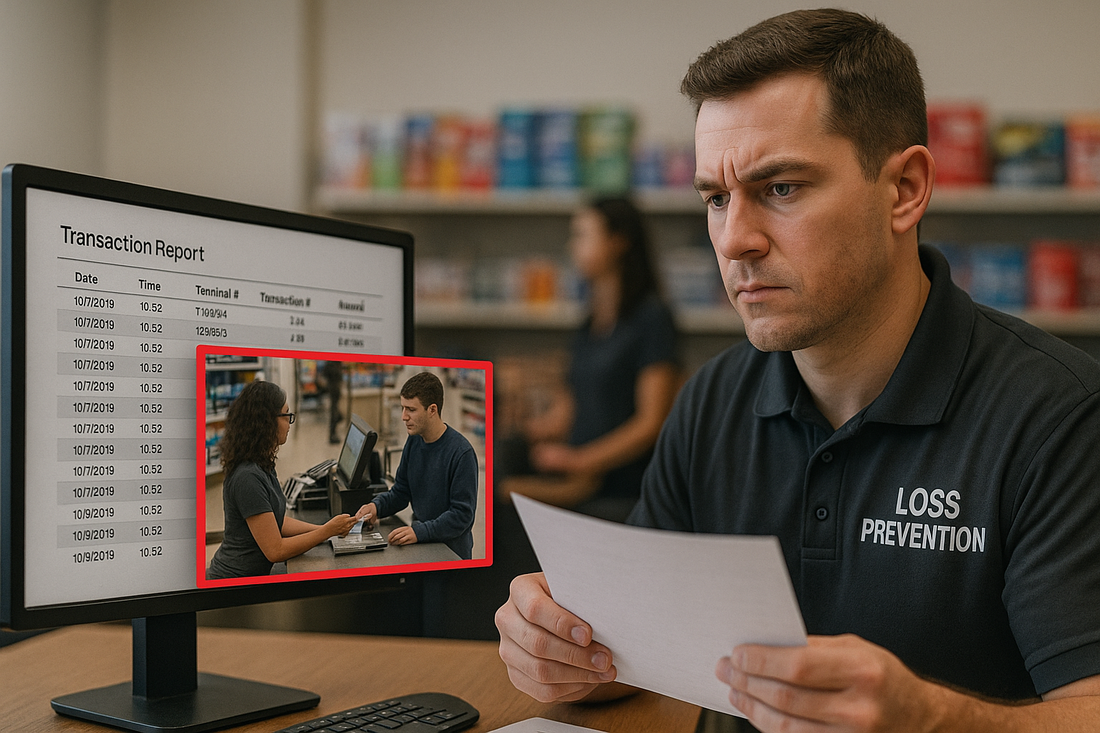
Introduction
Retail loss prevention isn’t just a department anymore — it’s a frontline defense in a multi-billion-dollar war. In 2023, the National Retail Federation reported U.S. retail shrink at $112.1 billion, driven by a toxic mix of shoplifting, insider theft, and organized crime. Giants like Walmart, Target, CVS, Home Depot, and Walgreens now dedicate entire divisions to fighting theft, yet traditional CCTV and static systems often miss the context that matters.
Loss prevention teams speak their own language — filled with terms like “sweethearting,” “pushout theft,” “EAS tag tampering,” and “refund fraud.” For industry outsiders, the terminology can feel like alphabet soup. For professionals, it’s a shared vocabulary of survival.
But here’s the catch: knowing the terms isn’t enough. As crime tactics evolve, traditional tools like NVRs and human-only monitoring fall short. That’s where ArcadianAI and its adaptive AI assistant, Ranger, step in — bridging the gap between outdated methods and real-time prevention.
This guide is your loss prevention dictionary + strategy manual, explaining the words, techniques, and challenges that define retail security in 2025.
Quick Summary / Key Takeaways
-
Retail shrink exceeded $112B in 2023 (NRF)
-
LP teams face insider + outsider threats daily
-
Key crimes: shoplifting, ORC, sweethearting, refund fraud
-
Techniques: AI video analytics, POS correlation, RFID, undercover LP
-
ArcadianAI reduces false alarms and adapts to modern crime patterns
Background & Relevance
Why now? Because shrink is at record highs, and retailers are under siege.
-
NRF 2023 Retail Security Survey: Shrink reached $112.1B, up from $94.5B in 2021.
-
FBI reports ORC cases tied to gang activity and fentanyl funding.
-
Canadian Retail Council (2024) flagged beauty products, pharmaceuticals, and alcohol as top theft targets.
Loss prevention terminology matters because it unifies security teams, law enforcement, insurers, and courts. A misused word can mean the difference between catching a fraudster or letting them slip away.
Core Topic Exploration
What Are Loss Prevention Terminologies?
Loss prevention (LP) is the discipline of reducing shrinkage — the financial losses caused by theft, fraud, error, or waste. Its language is built from decades of fieldwork, legal precedents, and evolving crime tactics.
Think of LP terms as the operating system of retail security: each one defines a risk, a method, or a countermeasure.
The Essential Crime & Fraud Tactics Glossary
Here’s a comprehensive list of LP crimes and tactics — alphabetically structured for clarity and SEO.
-
Booster Crew — ORC groups specializing in stealing high-demand goods for resale.
-
Cart Pushout Theft — Walking out with a full cart of unpaid goods.
-
Chargeback Fraud — Customers falsely disputing credit card charges.
-
Collusion — Employees conspiring with external thieves.
-
Coupon Fraud — Using counterfeit or manipulated coupons.
-
Counterfeit Goods — Selling fake branded products through retail channels.
-
Door Dash Theft — Grab-and-run near entrances/exits.
-
EAS Tag Tampering — Disabling or removing electronic article surveillance tags.
-
Employee Theft — Internal fraud ranging from register skimming to warehouse theft.
-
Gift Card Fraud — Exploiting stolen or fake gift cards.
-
Grab-and-Run — Quick theft from display counters (jewelry, cosmetics).
-
Identity Theft — Using stolen identities for credit or refunds.
-
Inventory Shrink — Overall loss from theft, fraud, or error.
-
LPR (License Plate Recognition) Bypass — Criminals using stolen plates to evade detection.
-
Organized Retail Crime (ORC) — Coordinated groups stealing at scale.
-
Price Tag Switching — Swapping labels for lower-cost checkouts.
-
Pushout Theft — Taking unpaid goods directly out of the store.
-
Refund Fraud — Returning stolen items or fake goods for credit.
-
Return Fraud — Using forged receipts or manipulated returns.
-
Shoplifting — Concealing or stealing items.
-
Skimming — Employees stealing small amounts of cash.
-
Sweethearting — Cashiers giving away goods by under-ringing.
-
Ticket Switching — Replacing barcodes to scan cheaper prices.
-
Vendor Fraud — Suppliers colluding with employees to inflate costs.
-
Wardrobing — Buying, using, and returning items as “new.”
Techniques Loss Prevention Teams Use
LP isn’t just about catching thieves — it’s about layered defenses:
-
Surveillance Systems (CCTV / NVR / VMS) — Cameras record activity, but static feeds create data overload.
-
VSaaS (Video Surveillance as a Service) — Cloud-native platforms like ArcadianAI offer scalability.
-
AI Video Analytics — Detect anomalies, filter false alarms, identify ORC patterns.
-
POS Exception Reporting — Correlating cash register data with video to detect sweethearting or void abuse.
-
RFID Tags — Smart tracking of high-value merchandise.
-
EAS Gates — Classic theft deterrent at exits.
-
Undercover LP Agents — Plainclothes security observing customer/staff behavior.
-
Case Management Software — Tools like Genetec Clearance or ArcadianAI Incident Hub for evidence tracking.
-
Law Enforcement Partnerships — Information sharing on ORC groups.
-
Training Programs — Teaching staff situational awareness and fraud spotting.
The Challenges Facing LP Teams Today
Even with advanced tools, LP professionals face massive challenges:
-
False Alarms — 80–90% of alerts from legacy motion detection are false positives.
-
Insider Threats — Employees committing theft are harder to detect.
-
Privacy & Compliance — GDPR (EU), Bill C-27 (Canada), NDAA (U.S.) limit surveillance options.
-
Resource Constraints — Many retailers cut LP budgets during downturns.
-
ORC Sophistication — Booster crews use encrypted comms, fake plates, and regional fencing.
-
Liability Concerns — Wrongful detentions can lead to lawsuits.
-
Technology Lock-in — Vendors like Verkada bundle cameras + software, limiting flexibility.
-
Data Overload — Thousands of hours of video, little actionable insight.
ArcadianAI + Ranger solve these pain points by combining camera-agnostic AI, POS correlation, and adaptive filtering that reduces wasted dispatches.
Comparisons & Use Cases
| Challenge | Traditional LP Approach | ArcadianAI + Ranger |
|---|---|---|
| Shoplifting | Rely on guards, EAS gates | AI detects concealment patterns in real time |
| ORC Gangs | Post-event police reports | Pattern recognition + plate analysis |
| Sweethearting | Manual audits | POS + video sync, automated alerts |
| Refund Fraud | After-the-fact review | Real-time exception detection |
| False Alarms | 80–90% wasted | 70%+ reduction via smart motion filters |
Common Questions (FAQ)
Q1. What does “sweethearting” mean in retail loss prevention?
It’s employee collusion at checkout — deliberately under-ringing or skipping scans.
Q2. What is organized retail crime (ORC)?
ORC refers to professional crime rings stealing goods at scale for resale.
Q3. Why is shrink such a major concern for retailers?
Shrink reduces margins, increases insurance costs, and erodes customer trust.
Q4. What is the difference between shoplifting and pushout theft?
Shoplifting usually involves concealment, while pushout theft is walking out with unpaid carts.
Q5. How does ArcadianAI help LP professionals?
By reducing false alarms, spotting insider collusion, and detecting ORC patterns across multiple sites.

Conclusion & CTA
Loss prevention is no longer about catching the occasional shoplifter — it’s about defending billions in revenue against evolving threats. From sweethearting to ORC, criminals adapt quickly. Traditional CCTV and manual audits can’t keep pace.
ArcadianAI’s Ranger AI assistant transforms LP from reactive to proactive: filtering noise, correlating data, and surfacing only what matters. That means fewer false alarms, higher ROI, and safer retail operations.
Security Glossary (2025 Edition)
AI Alerts — Automated notifications when AI detects anomalies.
Booster Crew — Organized group stealing goods for resale.
Chargeback Fraud — False credit card disputes to avoid payment.
Collusion — Employees working with criminals to commit theft.
EAS (Electronic Article Surveillance) — Anti-theft tags and gates at exits.
Employee Theft — Fraud or theft committed internally by staff.
Gift Card Fraud — Exploiting gift cards for theft or laundering.
Grab-and-Run — Snatching goods and fleeing.
Inventory Shrink — Total loss from theft, fraud, or errors.
LPR (License Plate Recognition) — Tech identifying vehicles in crime detection.
NVR (Network Video Recorder) — Hardware storing CCTV footage.
ORC (Organized Retail Crime) — Coordinated large-scale retail theft.
POS Exception Reporting — Identifying fraud by cross-checking register data.
Pushout Theft — Exiting with unpaid items in carts.
Refund Fraud — Returning stolen/fake items for cash/credit.
RFID (Radio-Frequency Identification) — Smart tracking for merchandise.
Shrink — Financial loss from theft, fraud, or waste.
Shoplifting — Concealing/stealing merchandise.
Sweethearting — Employee collusion, under-ringing at checkout.
VSaaS (Video Surveillance as a Service) — Cloud-based video monitoring.

Security is like insurance—until you need it, you don’t think about it.
But when something goes wrong? Break-ins, theft, liability claims—suddenly, it’s all you think about.
ArcadianAI upgrades your security to the AI era—no new hardware, no sky-high costs, just smart protection that works.
→ Stop security incidents before they happen
→ Cut security costs without cutting corners
→ Run your business without the worry
Because the best security isn’t reactive—it’s proactive.
